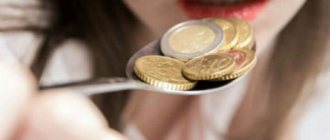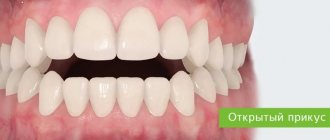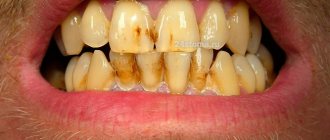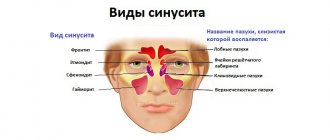To answer the question: why there is a yellow palate in the mouth (see photo), you should study the subject of attention in more detail.
When examining the mouth, in addition to the tongue, gums with teeth and the inner surfaces of the cheeks, a concave dome-shaped surface is also visible, limiting the oral cavity from above.
This palate is a mucous membrane-covered bony structure formed by the palatine processes of the two halves of the upper jaw.
The main purpose of the palate is to be a partition separating the oral cavity from the nasal cavity.
The palate performs the following functions:
- prevents saliva and food from entering the area responsible for breathing and smell recognition;
- ensures unhindered movement of inhaled and exhaled air;
- is responsible for the separate participation of the oral and nasal cavities in the function of sound formation.
In addition to the fixed bone (hard) part of the palate, there is also a soft part. This is a duplication of the mucous membrane (a fold that looks like tissue folded in half), moved up and down by a special muscle: when it contracts, the soft palate rises, and when it relaxes, it lowers.
In a calm state, the soft palate hangs down, allowing free passage of the air stream. But when swallowing, straining and blocking access from behind, from the nasopharynx, it absolutely hermetically separates the two largest cranial cavities from each other, preventing food from entering the nasal space.
Functions of the sky
The palate is a mucous membrane-covered bony structure formed by specific processes of the two halves of the upper jaw. Its main purpose is considered to be to separate the mouth from the nose. The sky performs the following functions:
- the penetration of saliva and food into the area responsible for breathing and recognizing aromas is prevented;
- serves for continuous movement of inhaled and exhaled air;
- necessary for the separate participation of the mouth and nose in the formation of sound.
In addition to the fixed bony part of the palate, there is also a soft part. It is a duplicate of the mucous membrane, which moves up and down with a special muscle: with its contraction, the soft palate rises, and when relaxed, it falls.
During a calm state, the soft palate hangs down, allowing the air stream to pass easily. But during swallowing, with tension and blocking access from behind, from the side of the nasopharynx, it hermetically separates two large cranial strips from each other, protecting the nasal cavity from the penetration of food.
Why does a yellowed sky appear?
There can be many reasons for yellow palate in the mouth. This area, like other areas of the skin and mucous membranes on and inside the head, is characterized by an abundant blood supply, which is explained by a dense network of capillaries. Due to the color of the blood flowing through them, the sky has a healthy color: the hard one is pale pink, and the soft one is pink, but of a darker tone.
Due to inflammation, the color becomes bright crimson or blue with a purple tint. If there is redness and a sore throat, then this is normal, as this is a natural reaction to an infection. What does the yellow sky in your mouth mean? This phenomenon may be associated with smoking. The resins present in tobacco and the decomposition products formed during combustion color the mucous membrane. This leads to the appearance of plaque.
In addition to staining, smoking leads to:
- disorder of blood microcirculation in tissues;
- changes in the composition and properties of blood.
Blood cells that carry only a small amount of oxygen will appear pale, as will the area they supply. In a place poorly supplied with oxygen, there is an increase in oppression and aging of cells, which is a consequence of chronic oxygen starvation.
Additional questions
► The palate is inflamed, like a worm - what is it?
Such manifestations are characteristic of damage to the hard palate adjacent to the inner surface of the front teeth. The bone surface in this place is uneven, contains a number of canals, grooves, and elevations, since there is no submucosal layer here, and the mucous membrane directly fuses with the periosteum.
Due to this structure, the inflammatory fluid cannot go into the tissue and form edema (as is the case with the soft palate), but accumulates between the mucous membrane and the periosteum in the existing grooves, increasing their size. This is how they take on the appearance of a “worm”. The causes and treatment tactics for this condition do not differ from those described above. In this case, it is important to anesthetize the affected area, since the pain syndrome with inflammation of the hard palate is usually significantly pronounced.
Liver diseases
Violation of intrahepatic metabolism causes deep disorders in the biochemistry of all organs and systems of the body, which leads to disturbances of all types of metabolism:
- protein;
- fat;
- carbohydrate;
- microelement;
- pigmented.
There is a failure in the formation of vitamins and hormones, a change in blood parameters (viscosity) occurs, which causes tissue hypoxia. The palate may turn pale, possibly loosening the mucous membrane. Often the color of the mucous membrane changes to yellow.
In case of liver diseases, the appearance of the sky will be special:
- yellowish corners of the anterior part of the soft palate are symptoms of chronic cholecystitis and gallstones;
- with cirrhosis of the liver, yellow spots appear in places of dying tissue;
- Due to viral hepatitis, the sky also turns yellow.
If yellow palate in the mouth is the cause of liver disease, then the help of a specialist is needed. This unpleasant symptom can only be eliminated through effective treatment.
What is candidiasis
It is a disease caused by fungi of the genus Candida. The affected areas are most often the mucous membrane of the mouth, and there is a change in the color of the gums and tongue. This is due to the fact that microorganisms have their location in the microflora of these areas, and a certain number of them are present in a healthy body, being in an inactive state.
An unpleasant taste and taste can confirm the disease, but an accurate diagnosis can only be made after a bacteriological examination, which is why you should not self-medicate.
Oral candidiasis is a disease caused by fungi of the genus Candida. The affected areas are most often the mucous membrane of the mouth, and there is a change in the color of the gums and tongue. This is due to the fact that microorganisms have their location in the microflora of these areas, and a certain number of them are present in a healthy body, being in an inactive state.
Bad breath and taste can confirm the disease, but an accurate diagnosis can only be made after a bacteriological examination, which is why you should not self-medicate.
Types of diseases that can cause pathology
Yellowness of the sky can appear due to the following ailments:
- Jaundice. It increases the concentration of the hormone bilirubin in the blood. Yellow sky is a symptom of infection with hepatitis viruses, cirrhosis of the liver, and obstruction of the biliary tract. The patient experiences nausea, vomiting, belching, and difficulty defecating. Treatment is performed after identifying the virus that caused the pigmentation changes.
- Syphilis. At stage 2, which lasts 2-5 years, symptoms of the disease appear periodically. Yellow spots usually appear in the mouth. There is a feeling of weakness and aching in the muscles. Hair loss also occurs. Unpleasant symptoms can be avoided with timely treatment. Penicillin or antibiotics are often used. We also need procedures to strengthen the immune system.
- Cholelithiasis. This is a gallstone disease that causes a yellow tint to the palate. The reason may be the filling of the gallbladder with stones formed due to the accumulation of cholesterol and salts. In this case, different methods of breaking stones are used. In advanced cases, the gallbladder must be removed through surgery.
- Cholecystitis. With it, a pronounced yellowness appears. Additional symptoms include a bitter taste in the mouth, nausea and pain in the right hypochondrium. Patients are prescribed antibiotics, means to normalize digestion, and detoxification.
Gastrointestinal diseases
The causes of a yellow soft palate in the mouth may be associated with gastrointestinal diseases. Changes in the properties of digestive juice during inflammation cause the deposition of bile salts in the tissues of the skin and mucous membranes. Sometimes itching appears on the skin, and a change in color is observed. The same symptoms also appear on the mucous membranes lining various cavities.
The yellow palate of the mouth may be due to chronic inflammation in the small and large intestines with frequent constipation. With pathologies in the liver and pancreas, a bronze-icteric color appears on the soft palate.
Blood diseases rarely manifest themselves; they are usually a reaction to metabolic disorders in the liver or other organ systems. Why is the palate in my mouth yellow? This may be due to anemia and anemia. Also, yellow color may indicate pathology of the adrenal glands.
Gastrointestinal tract dysfunction
The shade of the oral mucosa and hard palate changes to yellowish as a result of certain pathologies of the digestive system.
- Gastric ulcer , in which lesions form on the walls of the stomach. The patient feels restlessness in the left hypochondrium most often after eating. Additional signs of this pathology include nausea, vomiting, increased gas formation, coating on the tongue and a yellow palate. The patient is prescribed a special diet, physiotherapy, recommended to avoid stressful situations, and prescribed medication. Sometimes surgery is required.
- Gastritis in chronic form is an inflammation of the gastric mucosa with the appearance of belching, heartburn, unpleasant taste in the mouth, and rumbling in the stomach. A yellowish coating on the palate and tongue is also possible. Therapeutic measures include changing eating behavior, giving up addictions - alcohol, smoking, and taking medications.
- Colitis or inflammation of the large intestine , in addition to the characteristic plaque on the hard palate and tongue, is accompanied by abdominal pain, constipation or diarrhea, an admixture of mucus, blood or purulent discharge in the stool. Treatment of colitis is carried out in hospitalization. Foods that irritate the intestines are removed from the diet. If necessary, treat with antibiotics and anthelmintics.
If symptoms characteristic of one of the above gastrointestinal diseases appear, you should immediately seek help from a gastroenterologist.
- Lump on the upper palate - what to do;
- Viscous, thick, viscous saliva in the throat - the causes of its appearance;
- Something bothers me in my throat -
Associated symptoms
As you can see from the photo, the yellow palate in the mouth looks unnatural (the image is presented in the first section of the article). In addition to this symptom, there may also be accompanying signs:
- With kidney pathologies, edema and urinary disorders are likely to occur.
- Blood diseases manifest themselves as symptoms of insufficient blood supply to organs.
- Changes in the liver are characterized by digestive and metabolic disorders.
But if, with diseases of the digestive system, metabolism also suffers, then a change in body weight occurs; with Addison's disease, crises appear. In acute adrenal and vascular insufficiency, the following appears:
- sudden sharp pain in the lumbar region, legs, abdomen;
- decreased ability to move;
- severe fever;
- intense diarrhea and vomiting;
- arterial hypotension;
- loss of consciousness;
- violation of water-salt metabolism.
In all these cases, yellow palate is likely to appear in the mouth, which is why some people immediately turn to the dentist. Brown plaque may also appear on the teeth and tongue.
Diagnostics
If there is a yellow palate in the mouth of an adult or child, diagnostic measures must be performed. First, they visit the dentist, where a specialist conducts an examination of the oral cavity. The doctor pays attention to other areas of the oral cavity, including the areas between the cheeks, gums, and lips. After all, it is there that signs of a certain illness, for example, thrush-candidiasis, can be detected.
Since yellow palate in the mouth of a child and an adult does not appear as an independent disease, in addition to examination by a dentist, the help of other doctors will be required. Typically referred to:
- therapist;
- ENT doctor;
- oncologist;
- allergist.
Laboratory tests of blood, urine, bile and feces are considered an important point in diagnosis. Sometimes it is necessary to conduct allergy tests and study the immune system using ultrasound, MRI, CT, and radiography. Laboratory methods may also be required.
Yellow palate in the mouth of an adult
In people over 50 years of age, the appearance of a yellow coating on the palate is considered a physiological process
If the sky has turned yellow, you should see a dentist. During the examination, the specialist will determine whether the yellowness of the mucous membrane is a sign of any disease, or indicates a lack of proper oral hygiene.
The patient’s attitude towards bad habits is also taken into account. Yellowness with a pronounced network of veins is often formed as a result of regular smoking.
When conducting diagnostics, the patient's age is taken into account. In people over 50 years of age, the appearance of yellow plaque on the palate is considered a physiological process, so serious health problems are not always detected.
The child has
A yellowed sky appears not only in adults, but also in children. In addition to dental problems, this sign may indicate other diseases, so the child should be shown to a gastroenterologist, ENT specialist, pediatrician, infectious disease specialist, or hepatologist.
Often, young patients with this symptom are diagnosed with thrush. If there is any doubt in determining the problem, it is recommended to undergo a full examination, including donating blood to check bilirubin levels.
Treatment
If the soft palate in the mouth is yellow, then timely treatment is necessary. The information obtained after undergoing diagnostics allows you to identify the disease, as well as establish its cause. If a therapeutic pathology is detected (diseases of the gastrointestinal tract, kidneys), treatment is performed by a general practitioner or a specialist:
- gastroenterologist;
- urologist;
- nephrologist.
For a systemic illness such as rheumatism, syphilis, or HIV, treatment is required in a special medical institution. If oncological pathology is detected, then therapy is carried out with an oncologist, a surgeon and consultant doctors: neurologists, ophthalmologists and other specialists of a narrow profile.
When the microbial-viral nature of the lesion in the oral cavity is identified, antiseptics and antibiotics are used. Only the dentist should prescribe them. When the acute phase of the pathology subsides, professional cleaning of the oral cavity is necessary, without which there will be no success in treatment. Sometimes repair or replacement of orthodontic structures is indicated (if there are any problems). Only the patient himself can provide personal hygiene.
Curdled coating
With pharyngomycosis, candidiasis of the tonsils, mycosis of the pharynx, plaque in the throat has a thick curd consistency. After the fungus infects the oral mucosa, a whitish or grayish coating appears. It can be removed quite easily, but after a while it appears again. In this case, the patient may have bad breath, since plaque occurs as a result of the functioning and decomposition of microorganisms.
A person may have several types of fungi present at the same time. If a cheesy coating appears in your mouth, you should consult a doctor. There are many drugs for fungus, but each has its own specifics, it is aimed against certain types of fungi, so it is important to choose the right one.
Features of treatment
Treatment involves not only restoring the normal color of the sky, but also eliminating the main cause that led to the deviation. For yellowing of the palate and a bitter taste in the mouth, if this is associated with liver disease, herbal remedies are prescribed. These are “Gepabene”, “Hofitol”, “Silymarin”. Regenerating agents are also accepted - “Essentiale”, “Phosphogliv”, and preparations of animal origin - “Hepatosan”.
For kidney diseases, complex treatment is prescribed. Diuretics are prescribed - Furosemide, Veroshpiron. They also use antispasmodics - “Papaverine”, “No-shpa”, herbal medicines - “Canephron”, “Cyston”, drugs for lowering blood pressure - “Pentamine”, Reserpine.”
Therapy for gastrointestinal diseases is determined by the specific ailment. For example, for bacterial gastritis, antibiotics are used - Levomycetin, Tetracycline. The antibiotic Amoxicillin is effective for ulcers. To eliminate pain, antispasmodics – “Platifillin” – are used. Pepsin is used to stimulate the secretory function of the stomach. In addition to treating the underlying disease, symptomatic therapy is needed. The patient must use antiseptics. You should also rinse your mouth with a decoction of sage or chamomile, and perform salt baths (1 teaspoon of salt per 1 tablespoon of boiling water).
Folk remedies
Treatment with traditional methods is no different from those offered by medicine and dentistry. Home therapy involves:
- The use of antiseptics to be used in oral hygiene. These can be teas and infusions.
- Promoting health using traditional means. Honey and bee products are used for this.
Traditional medicine methods can only be used after consultation with a doctor. Also, do not use dubious means. Only then will the treatment bring positive results.
Language
Normally, the tongue is located along the midline of the jaw. If there is a constant deviation (recession) to the right or left, parents should show the child to a neurologist. This symptom may indicate damage to the caudal group of nerves of the skull. An additional sign is a drooping soft palate.
Another reason to seek help is that the language is too broad. This symptom is observed with hypothyroidism (decreased functional activity of the thyroid gland) and some genetic syndromes.
The listed phenomena are rare, unlike a short hyoid frenulum. This minimal anomaly in the structure of the maxillofacial apparatus can be determined visually; in addition, when screaming, the tip of the baby’s tongue rises. A short frenulum is not dangerous, but it can make sucking difficult and, in the future, complicate the pronunciation of sounds. In infancy, it is easily cut with a scalpel in an outpatient setting without suturing and virtually no blood.
Prevention
To prevent the appearance of yellowness in the sky, it is necessary to adhere to preventive measures. They are as follows:
- Careful and attentive oral care.
- Visit the dentist in a timely manner and follow his instructions.
- Preventing possible illnesses by strengthening your defenses. And when pathologies appear, timely treatment is required.
Thus, yellow sky appears due to various reasons. For any pathology there is an effective treatment. You need to follow the recommendations of a specialist, and then you will be able to prevent complications.
"Epstein's Pearls"
In 65-85% of babies after birth, several yellow-white tubercles with a diameter of 1-3 mm are found along the palatine suture. They are called palatal cysts or “Epstein's pearls.”
They are formed from residual fragments of the epithelial lining, which is destroyed under the influence of enzymes during fetal development. Epstein Pearls are filled with keratin.
Palatal cysts do not require treatment and do not cause discomfort to the child. They atrophy on their own in the first months of life.









